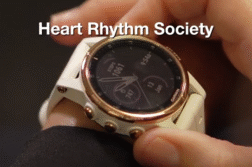DALLAS, Texas (Ivanhoe Newswire) — More than 300,000 sternotomies are performed every year in the United States, most commonly for coronary bypass surgery and mitral aortic valve replacement. Patients are encouraged not to lift more than 5 or 10 pounds, which can be very limiting. Now all of that is changing because of a new philosophy to speed up rehab and reduce the risk of injuring the incision.
Last August 51-year-old Bobby Brackens had open heart surgery and a quadruple bypass, which required doctors to “crack” his sternum.
Brackens said, “Yes, there was lots of pain. Of course, they give you pain medication, but as far as moving around, you weren’t able to move, move kind of gingerly because of the pain.”
Brackens recovered in three weeks, faster than the usual four to six, because of a new cardiac rehab philosophy called “Keep Your Move in the Tube.”
Jenny Adams, PhD, an Exercise Physiologist from Baylor Scott and White Heart and Vascular Hospital said, “It’s an imaginary tube, around your arms, and you just imagine walking around like a T-Rex dinosaur. You can do anything you want is my advice now, as long as you keep your move in the tube.”
The idea is not to put stress on the wires that are used to hold the sternum together while it heals.
By keeping the move in the tube, some cardiac patients can lift a lot more than the old recommendation of nothing more than five pounds. And by going home sooner, they improve their chances of healthy living for as long as ten to 15 years.
“So going home saves lives,” said Adams.
“It’s a great idea. It’s a great idea. Like I say it puts you on the road to recovery a lot faster,” Brackens told Ivanhoe.
In the initial study done at Memorial Regional Hospital in Hollywood, Florida 80 percent of the 500 patients who got the tube training went home earlier than expected, double the percentage who didn’t. And Adams says going home gives the patient a much higher chance of being alive a year later.
Contributors to this news report include: Don Wall, Field Producer; Cyndy McGrath, Supervising Producer; Hayley Hudson, Assistant Producer; Roque Correa, Editor and Mark Montgomery, Videographer.
Free weekly e-mail on Medical Breakthroughs from Ivanhoe. To sign up: http://www.ivanhoe.com/ftk
MEDICAL BREAKTHROUGHS
RESEARCH SUMMARY
TOPIC: KEEP YOUR “MOVE IN THE TUBE” DURING HEART REHAB
REPORT: MB #4567
BACKGROUND: Sternotomy is the gold standard incision in cardiac surgery, resulting in low failure rates and excellent proven long-term outcomes. It can also be used in thoracic surgery for mediastinal, bilateral pulmonary or lower trachea and main stem bronchus surgery. Sternotomy has to be performed properly to avoid short- and long-term morbidity and mortality. The surgical technique is well established and certain principles are recognized to be crucial to minimize complications.
(Source: https://mmcts.org/tutorial/80)
TREATMENT: Cardiac rehab is an important program for anyone recovering from a heart attack, heart failure, or other heart problem that required surgery or medical care. Cardiac rehab is a supervised program that includes physical activity, education about healthy living, including healthy eating, taking medicine as prescribed, and ways to help you quit smoking, and counseling to find ways to relieve stress and improve mental health. Anyone who has had a heart problem, such as a heart attack, heart failure, or heart surgery, can benefit from cardiac rehab. Studies have found that cardiac rehab helps men and women, people of all ages, and people with mild, moderate, and severe heart problems
(Source: https://www.cdc.gov/features/cardiac-rehabilitation/index.html)
MOVE IN THE TUBE: The “Move in the Tube” program at Baylor Scott and White Heart and Vascular Hospital is helping patients recovery faster. Exercise physiologist Jenny Adams, PhD said, “1,000 patients were studied, 500 got the Tube and 500 got the traditional sternal precautions. In the traditional sternal precautions group, only 40 percent were discharged home (the others to places like skilled nursing facility). In the Tube group, 80 percent went home because they could use their arms to safely get out of bed and chair (and as a result, by simply using their arms, the physical therapists discharged them home since they could get out of bed and chair on their own. When you go home, that is where you have a much higher chance of being alive at a year than those who go to skilled nursing facility because they can’t get out of bed and/or chair.”
(Source: Jenny Adams, PhD)
FOR MORE INFORMATION ON THIS REPORT, PLEASE CONTACT:
Susan Hall, PR Baylor
214-820-1817
If this story or any other Ivanhoe story has impacted your life or prompted you or someone you know to seek or change treatments, please let us know by contacting Marjorie Bekaert Thomas at mthomas@ivanhoe.com




